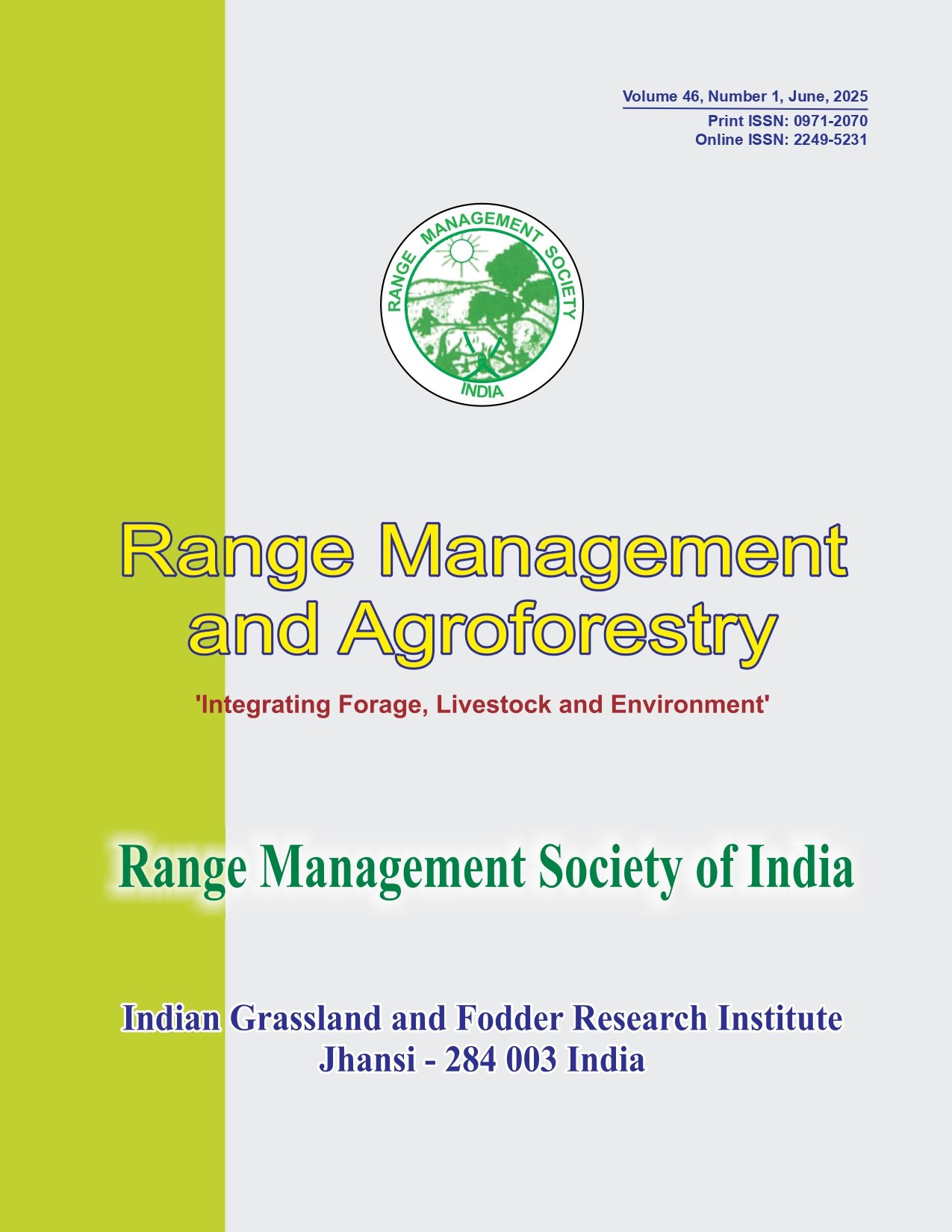Nutritive value and palatability of some range grasses in low rainfall woodland savanna of South Darfur in Sudan
Keywords:
Energy value, Grasses, Nutritive value, Palatability, Relative feed valueAbstract
Present study was conducted to evaluate the nutritional status and palatability of some range grass species at flowering stage from Ghazal Gawazat, Southern Darfur State, Sudan. Average CP and CF contents of the grasses were within the range of 5.57-10.74% and 37.06-51.29%, respctively. Nitrogen free extract (NFE) content was lower in Brachiaria publifolia (34.82) and higher in Fimbritylis dichotoma (50.07%). Average NDF and ADF contents of evaluated grasses varied significantly (P<0.05) and were within the range of 41.72-48.04 and 27.56-43.13% respectively. Energy value in terms of TDN, DE, ME, NEM , NEG and NEL were maximum for Brachiaria spp (64.65%, 2.84, 2.33, 2.07, 1.76 and 0.66 Kcal/g, respectively) and minimum for Digitaria spp (46.74%, 2.05, 1.68, 1.45, 1.20 and 0.47 Kcal/g, respectively). DDM values were also highest and lowest for Brachiaria spp (67.42%) and Digitaria spp (55.29%), respectively. Average dry matter (DMI) and total digestible nutrients intake (TDNI) ranged from 2.49% in Brachiaria spp to 2.87% in Cenchrus ciliaris and 1.29% in Digitaria spp to 1.70% in Fimbritylis dichotoma, respectively. Relative feed value (RFV), quality index (QI) and relative forage quality (RFQ) values were higher for Cenchrus ciliaris, Brachiaria spp and Fimbritylis dichotoma, respectively, while RFV (104.79%) was lowest for Fimbritylis dichotoma and QI (1.36) and RFQ (105.08%) for Digitaria spp. Brachiaria spp had highest nutritive value, while Cenchrus ciliaris and Fimbritylis dichotoma exhibited highest palatability.




